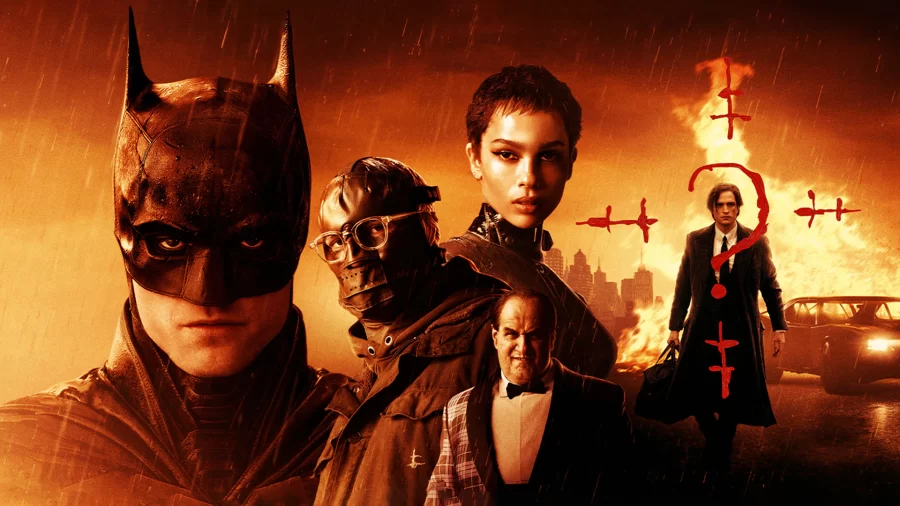“The Batman” challenges prior focus on villains
May 26, 2022
The Batman, DC’s newest release, is a satisfying classic Batman story with a twist. The movie has a darker, more serious tone than previous versions, which is portrayed through the characters, music, and complex story of the film. These aspects make The Batman unique from its predecessors, and gives it the potential to pathe a new standard for future DC films.
The Batman follows the story of Bruce Wayne and his pursuit of a masked villain who leaves clues and riddles that reveal hints to who could be behind the mask. Meanwhile, Batman attempts to find a missing girl Annika, with help from her friend, Selina Kyle.
In the beginning, Batman is introduced as a symbol of fear for the crime-infested Gotham—a classic and stereotypical depiction of Bruce Wayne’s vigilante persona. The bat symbol is looked upon not as a beacon of hopeful light but a spotlight for potential criminal targets. However, as the film progresses, The Batman challenges this original fear-thriving attitude of Batman and turns him into a “white knight,” a hero that is seen as a leader, not as a defender.
Similarly, the villains in this film—something DC usually exploits—played a lesser role in the overall story. It’s arguable whether Batman alone has made the franchise popular. He may be recognizable by his classic bat symbol and signal, but many people believe DC’s success and Batman’s fame comes from the eccentric villains in the series, the most infamous being the Joker. However, The Batman could be the first Batman movie that contradicts that theory, for the main antagonist, the Riddler, only has fifteen minutes of screentime.
The film diverges from a “comic” and “cartoon” quality not only through the characters, but through the music. Authentic examples of a classic “Batman-esk” soundtrack can be heard through composers such as Shirley Walker, who created the music for Batman: The Animated Series, and Danny Elfman, who composed the soundtracks for Tim Burton’s several Batman installments. Both songwriters have a distinct comic-book theme within their music that is brought out through peppy, snappy, and almost jazz-like tunes. It wasn’t until later Batman films like Batman Begins and The Dark Knight, did the soundtracks mature into something darker and refined. James Newton and Hans Zimmer focused on themes and motifs that would match the nature of the characters instead of excessive but musical fits of heavy brass. The Batman, composed by Michael Giacchino takes Zimmer’s and Newton’s style a step forward. Instead of a classic orchestra, Giacchino’s soundtrack has an artificial and a mechanical sound with a build up that seems to never end. It’s an entirely unique soundtrack that will make The Batman recognizable, and, like The Joker by Hildur Guðnadóttir, the soundtrack will create a new style that will influence the music for future films.
Because The Batman movie turns its attention away from the villains and towards Batman, the film breaks the famous “hero versus villain” plot. Although the main antagonist is the Riddler, his importance to the story is broken by the other character’s subplots and conflicts. The Batman consists of multiple character relationships which makes the storyline more complex than a simple one on one, hero vs. villain movie.
The Batman is the product from decades of Batman adaptations that will appeal to long-time Batman fans, while also drawing in new ones with a modernized story. The main plot can be easily understood by first-time Batman watchers, while also appealing to fans that know the complexity of the characters.


